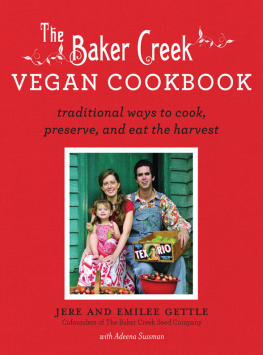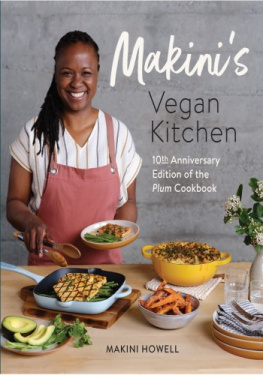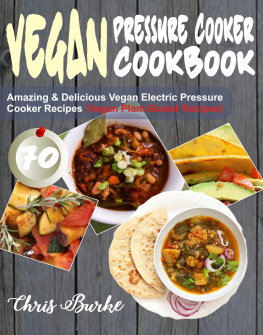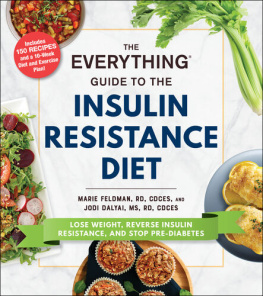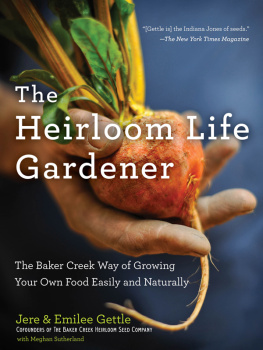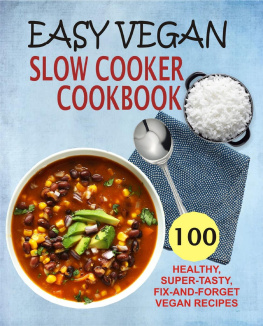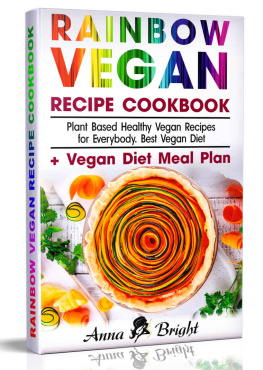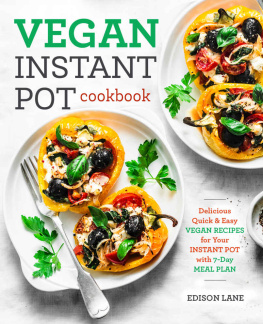

TO OUR DAUGHTER
Sasha
who finds joy in the garden
and in the kitchen

I live with my wife, Emilee, and our young daughter, Sasha, on a 176-acre parcel of property in Mansfield, Missouri, we call Baker Creek. All around us, on land that was passed down to us from my parents, we grow organic, heirloom produce on a patchwork of fields. Rarely a day goes by when I dont find myself in the field marveling at a new shape, color, or texture Ive never encountered before. I dont think it would be an overstatement to say that vegetables are my life and during harvest season, Emilee would certainly agree!
Through our company, the Baker Creek Heirloom Seed Company, we have an ongoing relationship with hundreds of thousands of gardeners and farmers who are passionate about growing and eating things that they can feel good about. Its hard, exciting work, and we love it.
As far as Im concerned, the kitchen is a natural extension of the field. My love of good food dates back nearly as far as my knowledge of farming and gardening. Being from a family of homesteaders based around the Idaho-Oregon border, I have memories of everyone taking an active role in raising produce, either as a hobby or as a career. We all had mud on our shoes, dirt under our nails, and freckles on our nosesand it suited us just fine.
We moved around a few times when I was young, but farming and gardening were our constants, with the roots we planted in the ground providing the roots we needed to settle down and get comfortable. It just wasnt home unless things were sprouting in the garden and in our fields, and until we were turning the fruits of our labor into soul-satisfying meals.
Naturally, all of this planting and growing meant a lot of good eating. My mom, Debbie, wasand isa great cook, who always kept things simple and delicious. My parents almost never went out to eat, because it was expensive, but also because it didnt fit our chosen, stick-to-the-farm lifestyle.
That meant homemade biscuits for breakfast, with jam in any number of flavors; casseroles made with different kinds of beans, potatoes, and tomatoes; burgers ground from meat that my dad hunted, topped with sauerkraut pickled from our very own cabbages; and double-crusted apple pies dusted with sanding sugar. Add to the equation two grandmothersOpal and Berthaand a slew of other kitchen-comfortable relatives, and the result was one well-fed little boy.
From an early age I took for granted something that, until recently, was becoming forgotten to many Americans: that the connection between the land under our feet and the food on our table is one of the greatest stories of American history.
My childhood was marked by long, sunny afternoons foraging wild asparagus along the creek banks near our homestead, the green pointy tips pushing up through the dirt. Mom steamed them before we ate them hot from the pot with our fingers, trying not to burn our hands or our tongues. We also spent hours plucking huckleberries in the hills, then would gorge ourselves before surrendering some of the inky berries for pancakes that wed make either on an open fire while camping or in our farm kitchen.
I also really enjoyed foraging in the wild for food. Wed often find meadow mushrooms in the fields, which my mom would saut for dinner. In the Ozarks, I searched the leaf-covered grounds in the woods near our home for treasured morels.
The end of the summer also brought epic sessions of preserving and putting up, an all-hands-on-deck affair that would result in hundreds of cans, jars, and frozen ziplock bags of garden-raised produce that we then feasted on all winter long. And come colder weather, our root cellar, where we kept yams, potatoes of all kinds, apples, rutabagas, turnips, and parsnips, became our go-to larder for delicious staples.
I can still feel the sun on my neck as I went out into the summer garden with my dad to find more watermelons than any one family could ever eat. Sunshine-hued Orangelos, red-fleshed Crimson Sweets, and yellow-centered Tender Sweetswe would crack them open right there in the field and eat the sweet hearts straight out of their green rinds, sugary juice running down our faces and making our hands sticky.
At that point, peoplemyself includedreally werent aware of the potential of heirloom produce. The significance of historic varieties was something we either took for granted or just let slip by. Some of our seeds came from grandparents or neighbors, which we would in turn save and pass along to our friends. Through the passage of years, I started to notice my favorite varieties disappearing from seed catalogs, and it was at that point I grasped the importance of preserving our agricultural heritage by saving and passing on heirloom seed varieties to keep them from becoming extinct.
I was three years old when I planted my first heirloom seedsthey were scallop squash selected by my dad. He helped me put them in the ground, and I eagerly awaited the day when the tiny green squash plants pushed through our rich soil.
A few months later, when I found a bumpy, wavy-edged vegetable lying under the shade of the giant squash vine, I was hooked. Every year my dad would take me into the field to help plant and harvest our cropsand to get my own seed selections into the soil.
When I first picked up a knife and started cooking for myself, at the age of twelve, things just came naturally. I guess I had a head start, since practically every meal Id eaten up to that point was eaten at home, or at least had been made by someone I knew. I enjoyed coming up with new recipesor adjusting old family favorites to my personal tasteall the while experimenting with techniques Id read about in my favorite cooking magazines.
Ever since I can remember, Ive been fascinated by how people liveand what they eatin different parts of the world. I pored over the pages of National Geographic and other travel magazines to learn about far-flung places, dreaming of traveling overseas and tasting the local specialties. Whenever we were at a new or larger supermarket, Id lose track of time studying the kumquats, star fruits, and other things Id never seen before, then Id go home and read anything I could get my hands on that would explain what I had been feasting my eyes on.
It was around this time that I also started collecting heirloom seeds as a hobby, and joined the Seed Savers Exchange, where I learned about the threat to our seeds from multinational corporations using biotechnology to manipulate crops, plants, and seeds. I printed my first heirloom seed catalog in 1998 as a teenagers hobby, and pretty soon business was booming. I suppose it was partly timing, but I just followed my passion for the seeds I loved and the rest unfolded, as they say, organically.
Today, our Baker Creek Heirloom Seed catalog has a circulation of 300,000 households, people who look to us to learn about recently reintroduced heirloom varieties and the ways that maintaining diversity through farming and gardening is a win-win proposition in terms of nutrition, taste, and social responsibility. (You can learn more about heirloom gardening and our company in our first book, The Heirloom Life Gardener.)
We sell upward of 2 million seed packets a year, and I know from our very active Web followers that people are using what they grow in the kitchen. Things simply taste better when they come from your own garden, and thats also the only way you can guarantee that your produce is being grown to your moral, ethical, and culinary standards.
Next page
